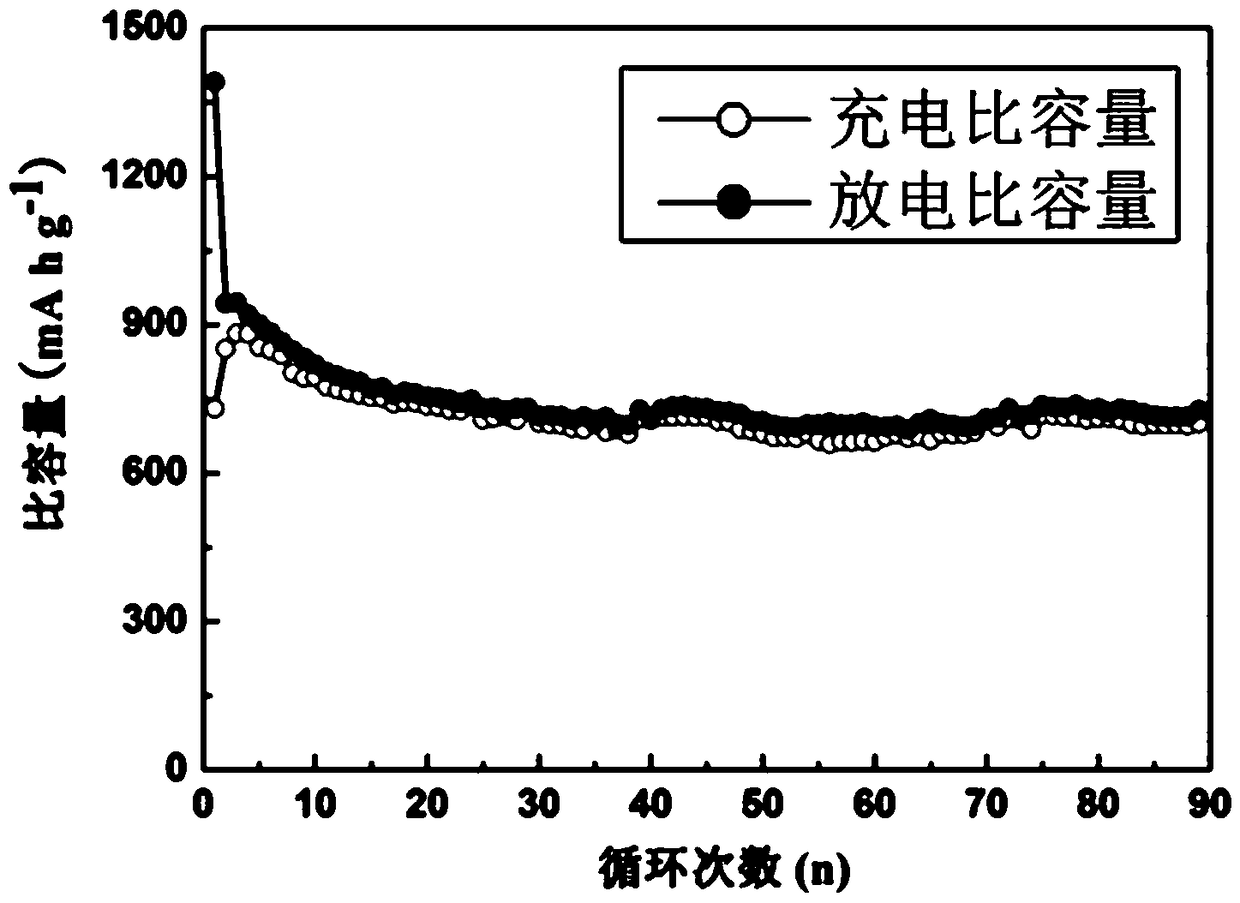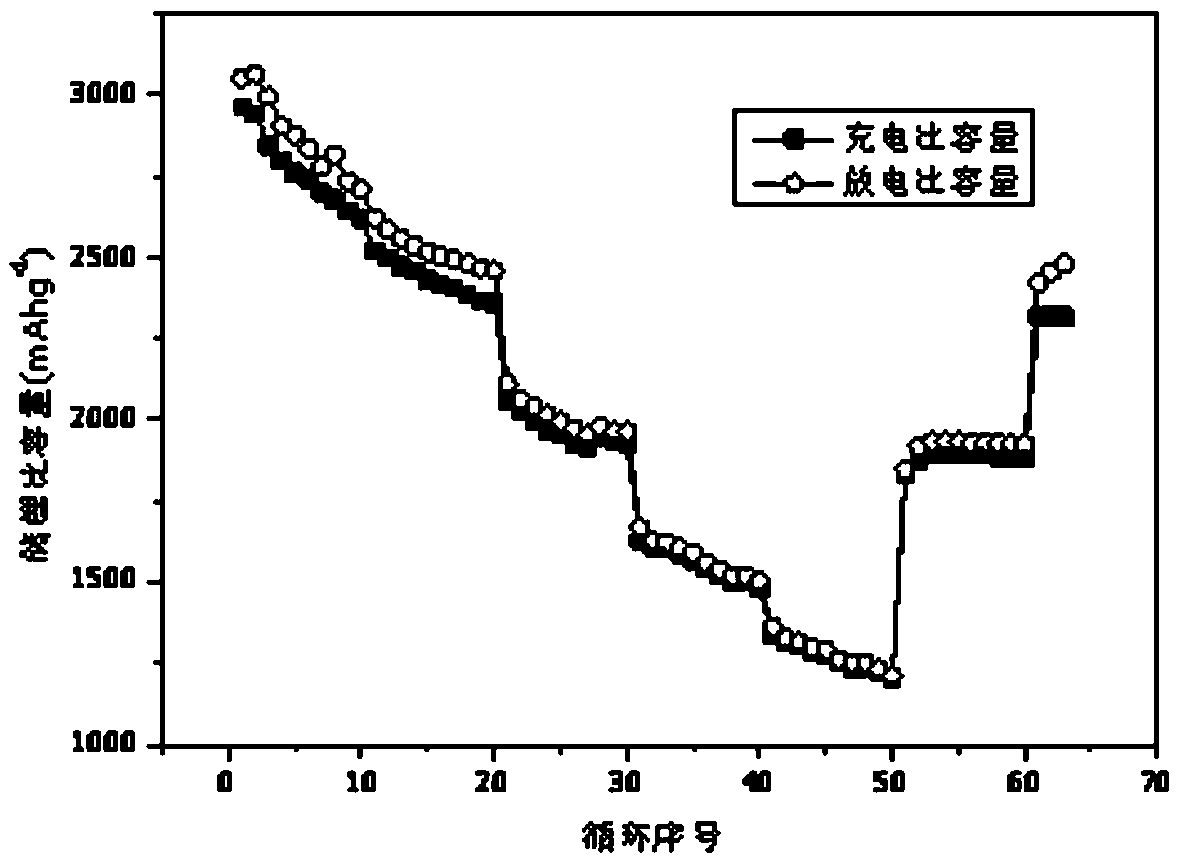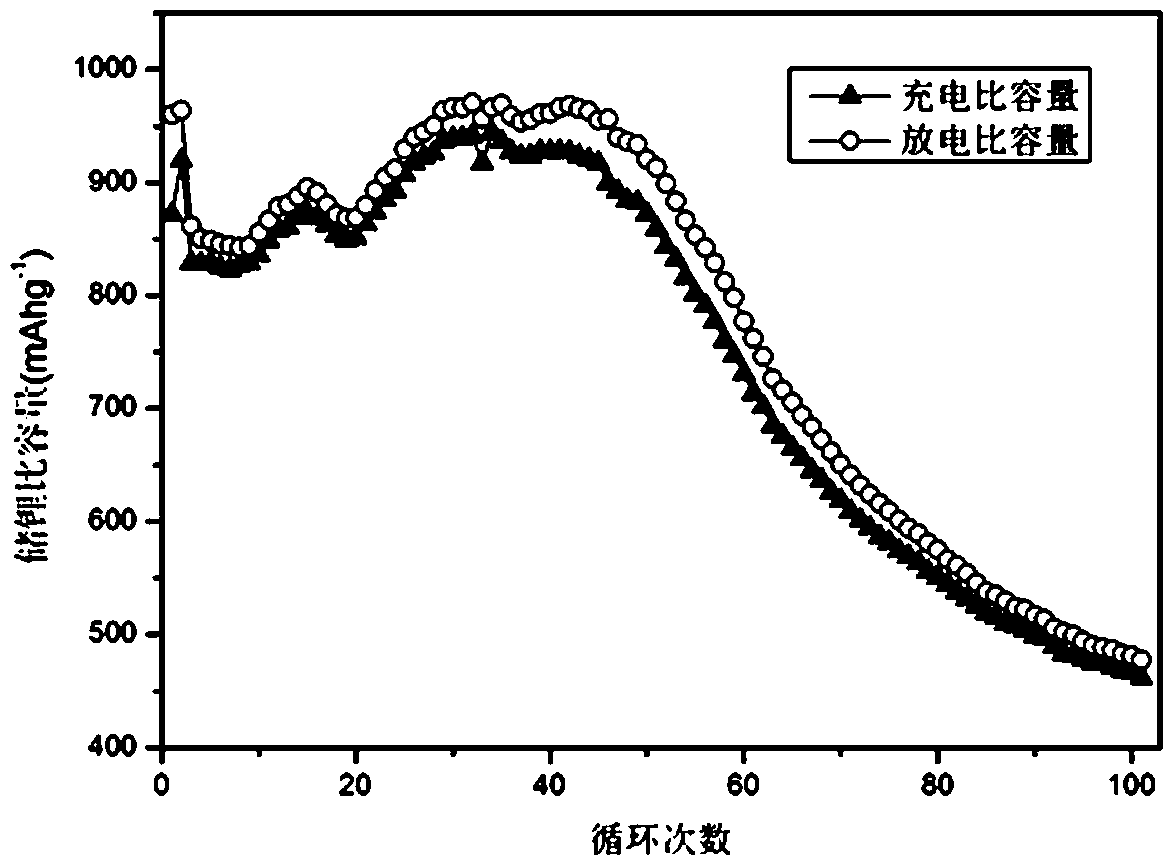Preparation method of 3D porous graphite/carbon nanotube-nanometer silicon aerogel lithium ion battery cathode material
A nano-silicon aerogel and porous graphene technology, which can be used in battery electrodes, secondary batteries, circuits, etc., can solve problems such as poor cycle stability
- Summary
- Abstract
- Description
- Claims
- Application Information
AI Technical Summary
Problems solved by technology
Method used
Image
Examples
Embodiment 1
[0049] In the first step, the surfactant polyvinylpyrrolidone is added to deionized water at 0.1%, and stirred for 2 hours to fully dissolve the surfactant in the water;
[0050] In the second step, carbon nanotubes and nano-silicon are added to the solution in the first step at a mass ratio of carbon nanotubes and nano-silicon of 1:1, and ultrasonicated until they are uniformly dispersed to obtain a certain concentration of carbon nanotubes and nano-silicon mixed Dispersion solution A;
[0051] The third step is to prepare a graphene oxide aqueous solution with a solution concentration of 2 mg / mL according to the mass ratio of graphene oxide and nano-silicon at a ratio of 1:0.1, and ultrasonically until it is uniformly dispersed to obtain solution B;
[0052] The 4th step, according to the mass ratio of graphene oxide and nickel nitrate is the ratio of 1:0.1, nickel nitrate is added in the solution B, stirs 1h, obtains mixed solution C;
[0053] In the fifth step, mix the mi...
Embodiment 2
[0058] In the first step, the surfactant polyvinylpyrrolidone is added to deionized water at 0.01%, and stirred for 1 hour to fully dissolve the surfactant in the water;
[0059] In the second step, carbon nanotubes and nano-silicon are added to the solution in the first step at a mass ratio of carbon nanotubes and nano-silicon of 1:5, and ultrasonicated until they are uniformly dispersed to obtain a certain concentration of carbon nanotubes and nano-silicon mixed Dispersion solution A;
[0060] The third step is to prepare a graphene oxide aqueous solution with a solution concentration of 0.5 mg / mL according to the mass ratio of graphene oxide and nano-silicon at a ratio of 1:10, and ultrasonically until it is uniformly dispersed to obtain solution B;
[0061] The 4th step, according to the mass ratio of graphene oxide and nickel nitrate is the ratio of 1:1, ferric chloride is added in the solution B, stirs 1h, obtains mixed solution C;
[0062] In the fifth step, mix the mi...
Embodiment 3
[0067] In the first step, the surfactant polyvinylpyrrolidone is added to deionized water at 1%, and stirred for 12 hours to fully dissolve the surfactant in the water;
[0068] In the second step, carbon nanotubes and nano-silicon are added to the solution in the first step at a mass ratio of carbon nanotubes and nano-silicon of 1:0.1, and ultrasonicated until they are uniformly dispersed to obtain a certain concentration of carbon nanotubes and nano-silicon mixed Dispersion solution A;
[0069] The third step is to prepare a graphene oxide aqueous solution with a solution concentration of 1 mg / mL according to the mass ratio of graphene oxide and nano-silicon at a ratio of 1:2, and ultrasonically until it is uniformly dispersed to obtain solution B;
[0070] The 4th step, according to the mass ratio of graphene oxide and nickel nitrate is the ratio of 1:1, cobalt oxalate is added in the solution B, stirs 1h, obtains mixed solution C;
[0071] In the fifth step, mix the mixed...
PUM
| Property | Measurement | Unit |
|---|---|---|
| Specific capacity | aaaaa | aaaaa |
Abstract
Description
Claims
Application Information
 Login to View More
Login to View More - R&D
- Intellectual Property
- Life Sciences
- Materials
- Tech Scout
- Unparalleled Data Quality
- Higher Quality Content
- 60% Fewer Hallucinations
Browse by: Latest US Patents, China's latest patents, Technical Efficacy Thesaurus, Application Domain, Technology Topic, Popular Technical Reports.
© 2025 PatSnap. All rights reserved.Legal|Privacy policy|Modern Slavery Act Transparency Statement|Sitemap|About US| Contact US: help@patsnap.com



